Goa on a Bike: Part Drei: Ferry Tale ride to Velha Goa!
Velha means Old in Konkani and I visited Old Goa, and no, it wasn’t a fairy tale, I had to cross many ferries to be able to tell this tale!
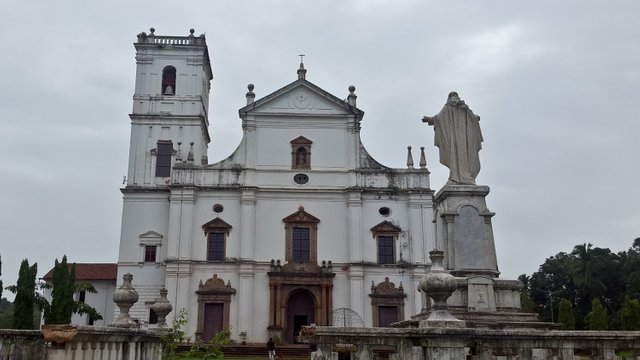
After having ridden around Goa in the last few days, enjoying the back roads and countryside this state has to offer, I decided to go to a rather touristy destination. If there is one place that people visit in Goa other than the beaches, it is Old Goa. The place is peppered with churches, built during the Portuguese rule in Goa and has a lot of European influence.
So let’s walk (or ride) down the historic lanes of Velha Goa and see what it’s all about.
For starters, whether in season or not, the place is generally teeming with tourists. People pouting and clicking selfies in front of a tombstone is not unheard of! You can also see roadside vendors selling overpriced refreshments to hungry and thirsty tourists. Carry your own food and water to be a happy camper!
First Stop: The ruins of the Church of St. Augustine
The Church of St. Augustine was completed in 1602 over a period of 5 years by the Augistinian friars, who had reached Goa a decade prior. In 1835, the Portuguese rulers forced the church to be abandoned and 7 years later in 1942, the building started collapsing and by 1938, the structure had dilapidated to its present form.
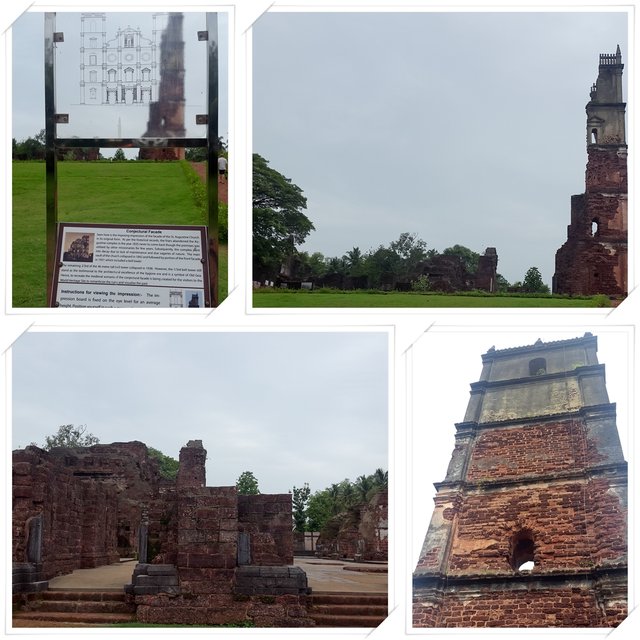
Click to enlarge image
From L to R: A sketch which gives an outline of what the church would have looked like when fully built. The church in its present form. The main entrance to the church. The lone tower as visible from the outside of the church complex.
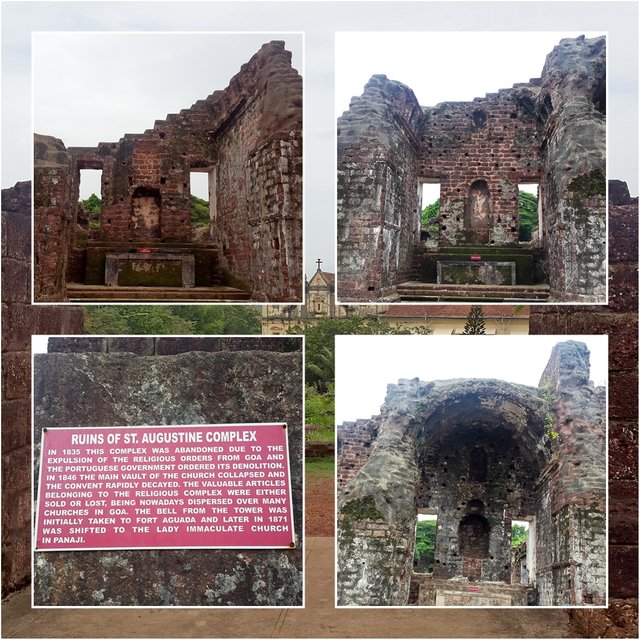
Click to enlarge image
Three Altars within the main part of the church.
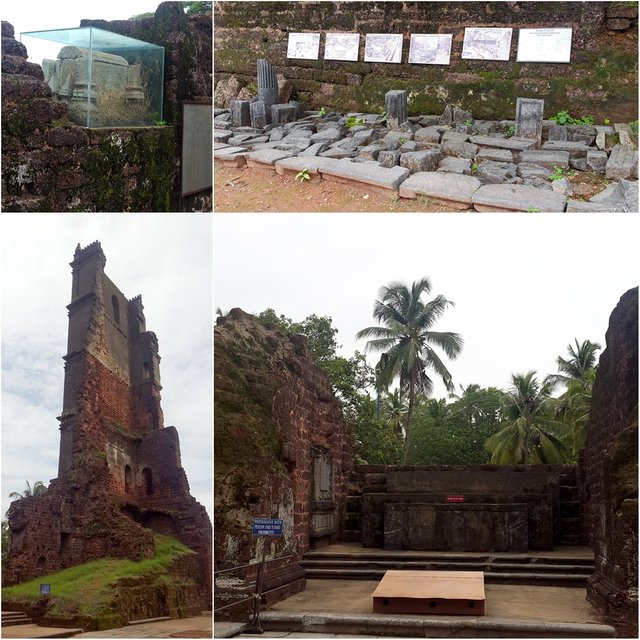
Click to enlarge image
From L to R: Relics of St. Ketevan were formerly placed here, now relocated to a nearby museum. Pieces excavated from the site of the ruins. The tower as visible from within the church. The main altar of the church.
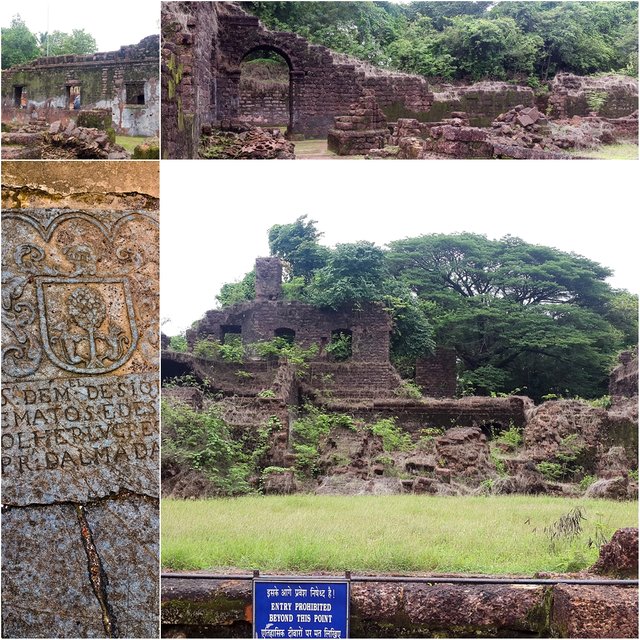
Click to enlarge image
The ruins from the outer part of the building and an inscription on stone which was placed on the floor.
Se Cathedral
The Se Cathedral was built between 1562-1619. The architectural style of the church is said to be Portuguese-Manueline. Outside the church there is a prominent signboard telling people to dress ‘appropriately’. If you find that instruction confusing, then just wrap yourself up in cloth like an Egyptian mummy and you will be good to go!
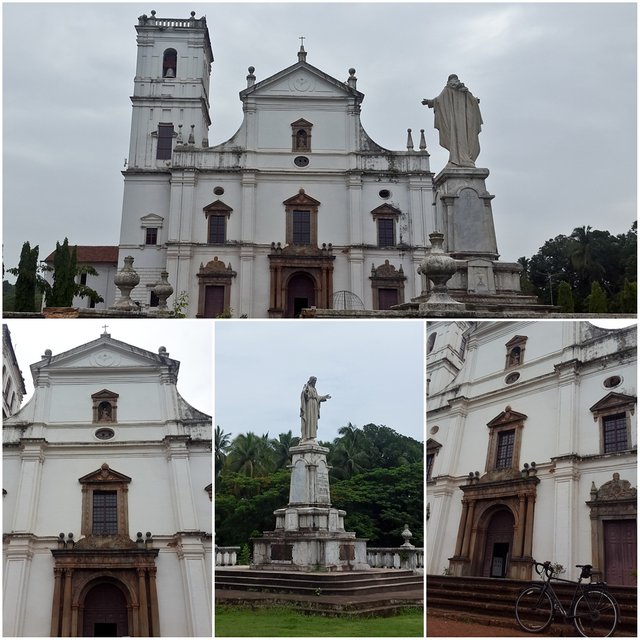
Click to enlarge image
The front façade, the tower on the right fell in 1776 and wasn’t rebuilt. The entrance to the cathedral. A statue of Jesus in the courtyard outside the church. Bikes aren’t allowed inside the campus, but with a little bit of begging and pleading, they allowed me to take a picture with my bike!
Basilica of Bom Jesus
The Basilica of Bom Jesus is a UNESCO World Heritage Site. St. Francis Xavier’s mortal remains are placed within this basilica. The church was built between 1594-1605.
"What does it profit a man," Ignatius had asked Francis, “if he gains the whole world and loses his soul?"
This church attracts the majority of tourists and as such I stayed away. It was far too crowded.
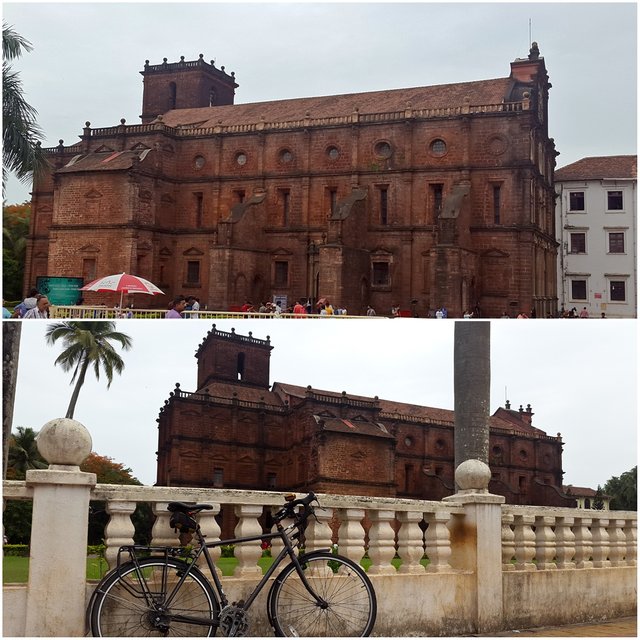
Click to enlarge image
The church as viewed for the north side
St. Cajetan Church
The St. Cajetan Church was completed in 1661. This church is different from the others in the area, since it was built under the supervision of Italian architects.
The Viceroy’s Arch
When you arrive at Old Goa via the waterways, currently the docking point for the ferry to Divar Island, you will enter through the Viceroy’s Arch. Most people do not end up seeing it because they enter and exit Old Goa from the main highway.
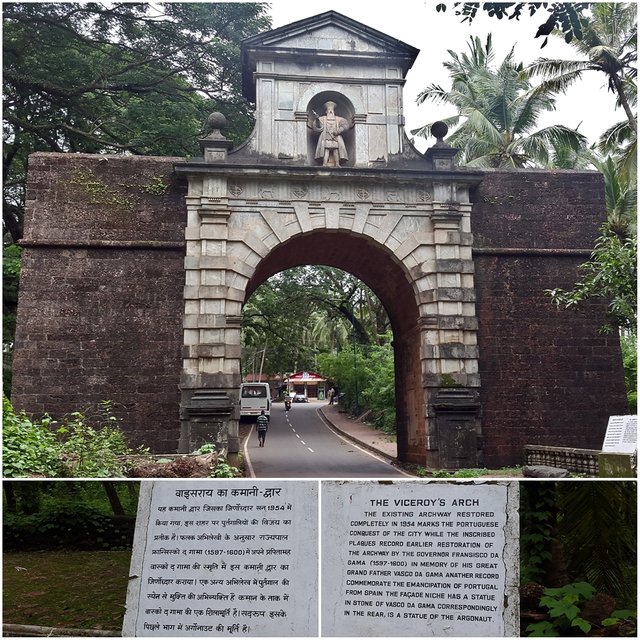
Click to enlarge image
Description of the arch is in the bottom half of the picture in English and Hindi.
The etc. in Velha Goa
In the top image you can see the lone tower from Se Cathedral. This picture was taken from the ferry as I left Old Goa for Divar Island.
The image on the bottom left is the climb to the Church of Our Lady of the Mount. And as the name suggests, it is atop a small hill with a steep road leading to its base and a steeper stairway leading to the church. After having cycled to the top of the hill, my lungs had no oxygen left to walk the steps to the top. So I enjoyed the view in the shady trees from the bottom! Even though this is just half a kilometre away from the main churches, this place sees hardly any tourists.
The third image is of the boats which operate in full swing during peak season (between the months of November to February). Currently the boats are docked up because of the lower footfall.
Ferry Tale
I ended up taking four ferries to do the roundtrip to Velha Goa. Though extremely enjoyable, it can take some amount of time, as the ferries travel at a top speed of 8 kmph! Recorded on my speedo. One also needs to wait around for the ferry to be on the correct side of the river. The ferries I used were:
Pomburpa to Chorao Island
Chorao Island to Ribandar
Velha Goa to Divar Island
Chorao Island to Pomburpa
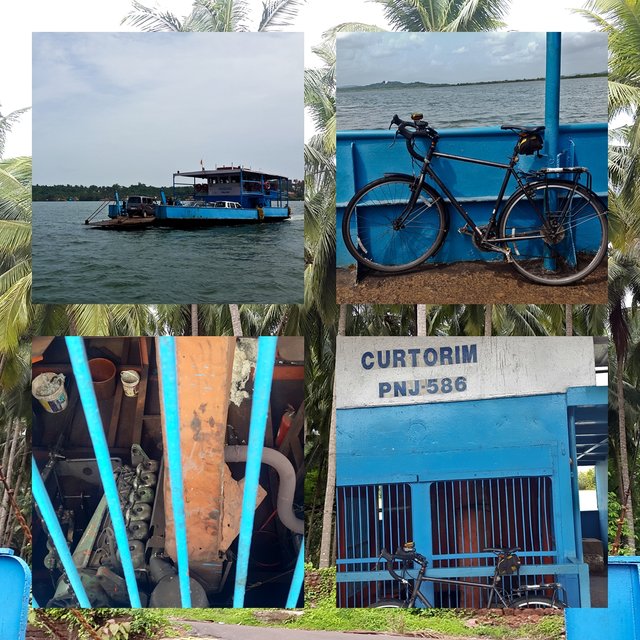
Click to enlarge image
The background image is of coconut trees from a ferry. Top left is a ferry going in the opposite direction to us. My bike just hanging around on a ferry. The diesel engine which powers the ferry, the fumes are quite strong, so if you aren’t a petrolhead, you better stand away! A boat named Curtorim.
Cycling the Isle
Captures from the islands of Divar and Chorao.
The first image is taken from a ferry of fishing boats parked up for the day, late in the evening.
The second is the Konkan Railway as it threads its way through the islands.
The third is of another cyclist. This wonderful gentleman is riding to join his friends for a spot of fishing. He is carrying the fishing rod in one hand while he guides the cycle with the other.
The fourth is a couple of boats parked up. I didn’t see any fishermen at that point of the day.
The Ride
For those interested in the cycling aspect of ‘Goa on a Bike’. The ride was 80 km, with 580 metres of climbing. Though it was all rolling terrain, with just a couple of steep climbs.
Once again I chose to ride the back roads rather than take the highway. The highway route was 40 km round trip; I doubled it and made it an 80 km ride. Just the way I like it!
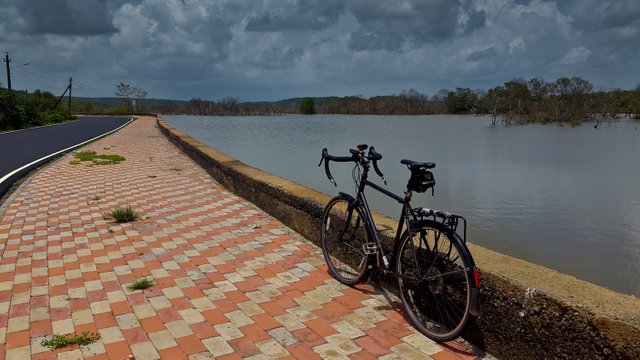
Click to enlarge image
On my outward journey, the clouds loomed large and threateningly. Fortunately it didn’t rain. I had carried my DSLR to indulge myself in improving my photography skills. It wasn’t meant to be, as I forgot the memory card for my camera!
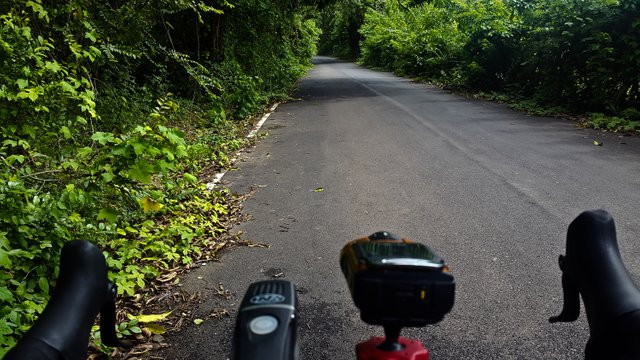
Click to enlarge image
Dense vegetation on the islands. It is both cool and humid because of the plants.
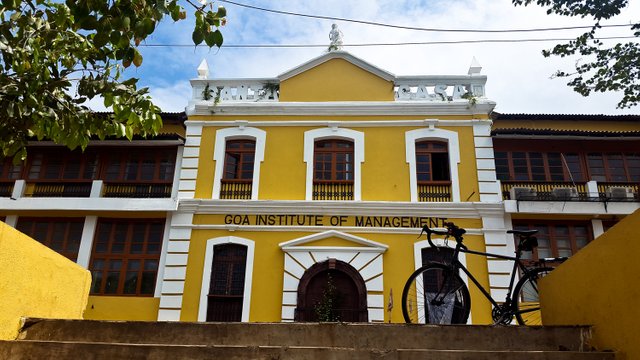
Click to enlarge image
Goa Institute of Management in Ribandar. I liked the colourful building. This college campus was earlier a hospital building. And one of the boy’s dormitory was earlier the morgue! Beat that for college stories
The Strava details of the ride:
You can read about my previous ‘Goa on a Bike’ escapades below:
Goan Excursion to Arambol
Chorao Island in the rain!
Corjeum Fort, Mayem Lake, Aravelam Caves and Harvalem Waterfall!
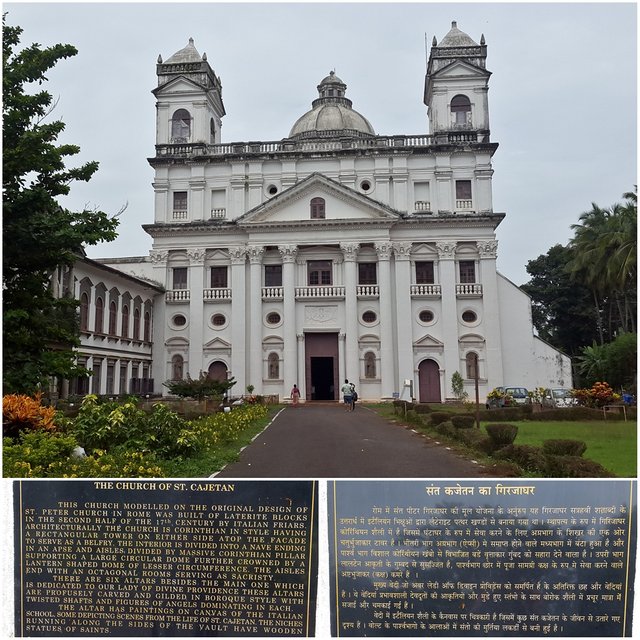
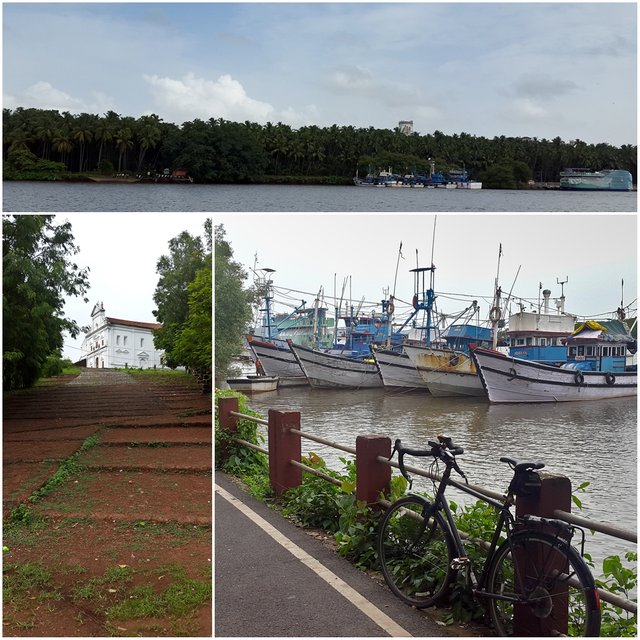
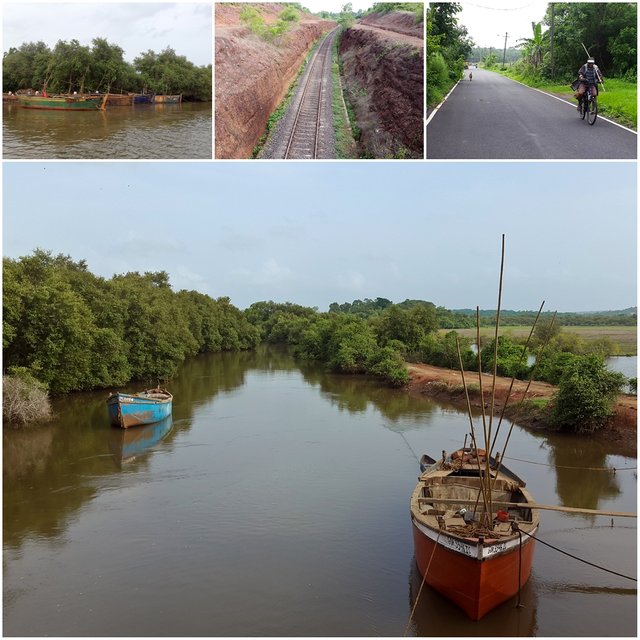
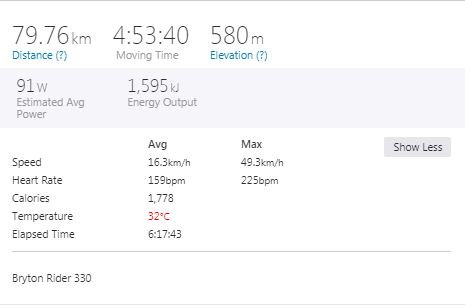
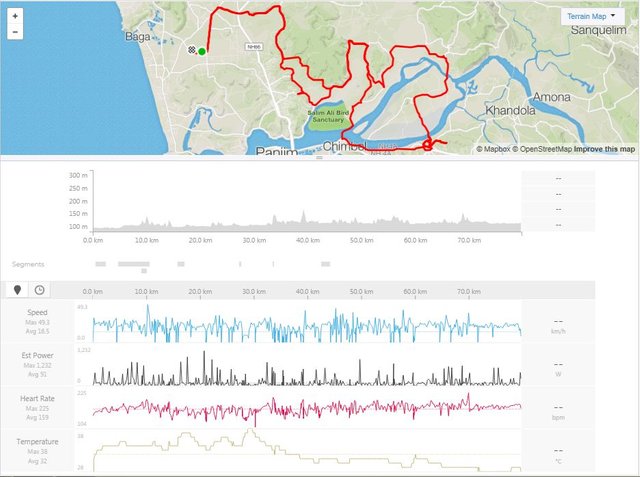
Great post again, like usual
Thanks @ultrabiker
Congratulations! Your high quality travel content caught our attention and earned you a reward, in form of an upvote and resteem. Your work really stands out. Your article now has a chance to get curated and featured under the appropriate daily topic of our Travelfeed blog. Thank you for using #travelfeed
20 SBD Up For Grabs in the TF Cup! - lean more about the contest here.
Thanks @travelfeed
Oh yeahhh thanks for taking us with you on this ride!
it's so amazing how the architecture of Goa is similar to what we have here, I didn't know the portuguese had ruled over there.
My city has a bit of french architecture, so they are more curvy. We like to say that the portuguese are straight, the buildings look like boxes hahahaha
But our churches here do look exactly like in old Goa, almost felt like in Brazil.
Thanks for sharing @twowheeledmonkey, i'll upvote once my vp loads up.
Thanks Arthur! The French are more curvy than the Portuguese? Are we still talking about buildings or have we switched to women? :D
The Portuguese influence in goa isn't limited to the churches. Religion, language, laws, food, culture, names have all been influenced by the Portuguese.
If i am not mistaken even your surname is Portuguese?
AHAHHA well I've been to France and Portugal, gotta say that the women are equally beautiful, but when it comes to buildings, at least in my city, they are more curvy hahahaha
Yeah, It can be 'Oliveira', my family is a mix of european names. I've never traced our ancestors and now that I don't have my grandparents anymore it's quite difficult.
This post was shared in the Curation Collective Discord community for curators, and upvoted and resteemed by the @c-squared community account after manual review.
Thank you @c-squared :)
Congratulations! Your post has been selected as a daily Steemit truffle! It is listed on rank 5 of all contributions awarded today. You can find the TOP DAILY TRUFFLE PICKS HERE.
I upvoted your contribution because to my mind your post is at least 25 SBD worth and should receive 123 votes. It's now up to the lovely Steemit community to make this come true.
I am
TrufflePig, an Artificial Intelligence Bot that helps minnows and content curators using Machine Learning. If you are curious how I select content, you can find an explanation here!Have a nice day and sincerely yours,

TrufflePigThanks @trufflepig
Enjoyed so much reading it, check this out:
https://steemit.com/goa/@afiii/10-nights-of-drinks-weed-and-first-time-on-cocaine-in-goa-india